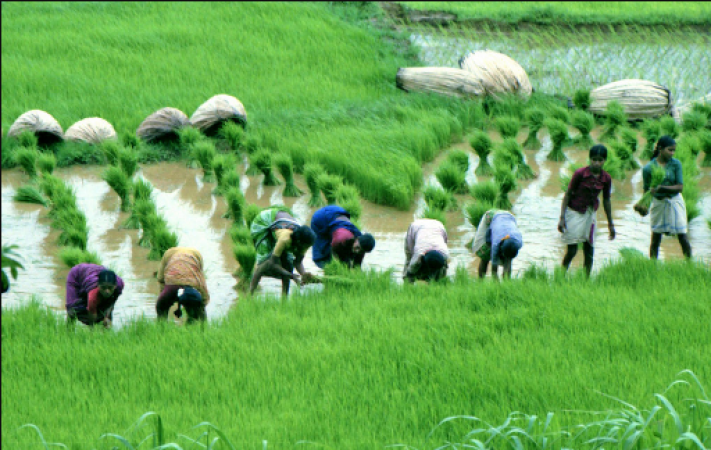
New Delhi: India, the world's second-largest rice producer, faces significant hurdles in exporting its rice globally. A combination of factors, including high production costs, low quality, government policies, competition from other countries, inadequate infrastructure, and a lack of awareness, contribute to India's struggles in the international rice market.
High production costs pose a major challenge for Indian rice exporters. Factors such as expensive labor, fertilizers, and irrigation increase the overall cost of production, making it difficult to compete with other countries offering lower prices. Additionally, the quality of rice produced in India falls short compared to its global counterparts, stemming from issues like poor quality seeds, subpar irrigation water, and inadequate agricultural practices.
Government policies further impede India's rice exports. The imposition of export restrictions, high export taxes, and hefty import tariffs hinder the competitiveness of Indian rice in the global market. These policies limit the volume of foreign exchange earned from rice exports, adversely affect job creation in the agricultural sector, and present challenges for Indian farmers striving to make a livelihood.
Also Read: KTM India Launches the 2023 KTM 200 Duke: A Powerhouse Upgrade for Performance Enthusiasts
Recognizing these obstacles, the Indian government has taken steps to address the issues hindering rice exports. Efforts include reducing production costs, enhancing rice quality, and eliminating policies that impede international competitiveness. However, it remains to be seen whether these measures will yield positive results in the long run.
In addition to domestic efforts, India also contends with strong competition from other major rice-exporting countries such as Thailand, Vietnam, and Pakistan. These nations possess a competitive edge, offering lower-cost production and higher-quality rice, which presents a formidable challenge for Indian rice in the global marketplace.
Moreover, inadequate infrastructure compounds India's export woes. Insufficient port facilities to handle large rice shipments, poorly maintained roads, and railways hinder the smooth transportation of rice, further limiting India's export potential.
Also Read: President: Finland will review the status of the Russian consulate
A crucial factor contributing to India's export challenges is the lack of awareness among potential buyers regarding the quality and availability of Indian rice. The Indian government must intensify promotional efforts to increase awareness and showcase the diverse range of rice varieties it produces, facilitating stronger connections with prospective international buyers.
While India faces significant obstacles in exporting rice globally, there is optimism that the government's proactive measures will address these issues. Successfully boosting rice exports would not only contribute to the growth of the Indian economy but also generate employment opportunities for farmers across the country.
Also Read: Mali Marches Towards Progress: A Historic Vote on a New Constitution
As the government continues to prioritize efforts to reduce production costs, enhance quality, improve infrastructure, and promote Indian rice to the world, India has the potential to emerge as a major player in the global rice market.